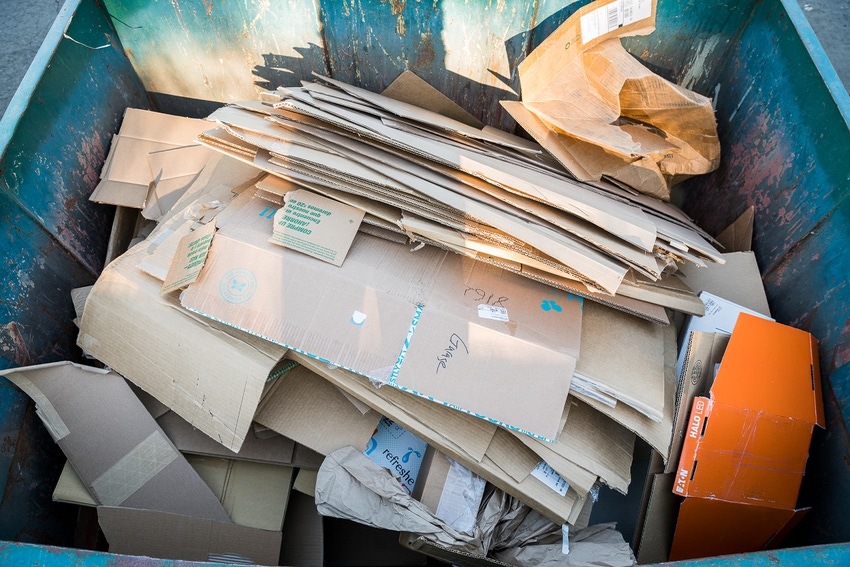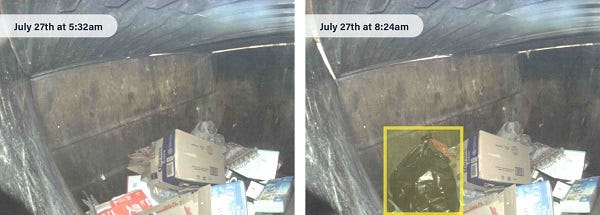How applying machine learning to contamination identification at the source of generation enables a profitable recycling model

Sponsored Content
With China refusing most recyclables, the U.S. has seen a significant decline in a nearly $5 billion annual recycling market (CNN Money). As a result, the most prominent course of action right now has been to send previously profitable recyclables to landfills or to stockpile them (WSJ). The good news? U.S. recyclers now have the opportunity to finally reset the business model of recycling collection and processing. Our industry must take this much needed opportunity to attack the core issue of reducing contamination at the source with the implementation of reliable, scalable monitoring and detection technologies. Welcome to Recycling 2.0.
“Quality starts at the curb.” - Chris Coady, The Recycling Partnership
Quick Fixes (and why they won’t work long-term)
Before taking a look at advanced identification technology, let’s assess some of the other industry approaches for battling contamination.
“We cannot continue to act and behave as if business as usual will offer a solution to today’s issues.” - National Recycling Coalition
1. Why don’t we increase our MRF sorting efforts?
Infrastructure is expensive. Right now, recyclers are increasing their focus on MRFs, an already costly operation, by adding more man power or utilizing expensive robotic machinery for more scrutinized sorting. But this approach can take a long time to implement, only adding to the high operational cost of recycling (Axios).
Haulers may also choose to pass through the increased processing costs to their customers, but many are hesitant because of current contract terms and customer price sensitivity. When the opportunity to adjust pricing does arise, whether through “force majeure” or at contract renewal, customers in competitive markets can (and often do) jump ship to lower cost competitors, or altogether abandon recycling efforts, rather than pay more.
These solutions put a band-aid on the problem rather than addressing the root cause. Cleaning up contamination at its origin point can reduce or eliminate the need for expensive sorting infrastructure downstream.
2. Why don’t we just find new markets for our material?
While U.S. recyclers already ship to other ports and have started diverting from China, these shifts are accompanied by added freight costs and agreements demanding lower prices (recycling today). Additionally, smaller markets inevitably have limited demand for imported recyclables.
While finding new markets may be a viable short term solution for some, it still doesn’t address the core issue of contamination in recyclables and is not sustainable long-term. Over time, it is inevitable that other markets with environmental initiatives (Resource Recycling) will close their ports to contaminated and poorly sorted recyclables and also implement tariffs (similar to the 25% scrap import tariff imposed by China).
3. Why don’t we educate generators on proper recycling habits?
Since the earliest days of recycling, the waste industry has tried to coach generators on proper recycling and sorting habits, but with limited success. Untargeted and overly generic tools (flyers, mailers, etc.), along with the lack of a mechanism to enforce or support proper habits, have resulted in a confused, unengaged and improperly motivated customer base. Well-intentioned generators engage in “wishcycling” - putting everything in the recycling container hoping that it will be taken care of down the line and not realizing that they’re contributing to the contamination problem more than they’re helping.
“Unfortunately, what single stream did not lead to was an increase in consistent education and outreach to correct the aspirations of wishful recyclers” - David Biderman, executive director and CEO of SWANA (via Waste360)
Industry trends have demonstrated that consistent and highly targeted outreach can result in dramatic improvements in the compliance of recycling streams (The Recycling Partnership). But scaling this kind of oversight beyond a single neighborhood, or for more than just short periods of time, can be extremely costly.
Recycling 2.0: Contamination Identification Technology
Through the power of machine learning, we can now identify contamination at scale, giving us the opportunity to completely automate material auditing.
How does this work? First, in-dumpster cameras allow continuous auditing of waste streams. Machine learning is then applied to the imagery to analyze contents, automatically identifying contamination and measuring performance.
With this detailed contamination information (i.e. contamination count and type per cubic yard) tied to a specific customer, outreach can now be highly targeted and provided automatically with actionable instruction to correctly adjust generator behavior and drastically reduce contamination. For example, providing an image of the contamination in the container allows haulers to proactively prompt customers to remove the contamination. It also passes through costs, supported by verifiable imagery evidence, to those actually causing the problem rather than forcing all customers to foot the bill.
The ability to identify contamination enables us to reduce contamination at the source with high frequency, targeted coaching through digital channels that people are already engaging with on a daily basis (i.e. emails, texts, websites, social media, etc.).

Compology’s cameras provide automatic Contamination ID, alerts, scoring and reports to reduce contamination at the source.
Compology’s cameras provide automatic Contamination ID, alerts, scoring and reports to reduce contamination at the source.
Subsequently, reduced contamination at the dumpster level results in cleaner recycling streams, eliminates labor-intensive “lid flipping” costs and reduces MRF sorting costs, all while helping haulers and generators meet regulatory requirements and Zero Waste goals through proper tracking, measurement and reporting.
“Instead of conducting expensive, labor-intensive, infrequent and time-consuming content audits, I can remotely monitor our customer’s containers 365 days a year with Compology’s hardware and web-based software to help my customers reduce contamination and increase diversion.” – Joe Matz, District Manager, Universal Waste Systems
Recyclables are just like any other commodity – the more pure, the more valuable. Using Compology’s contamination recognition technology enables a cleaner commodity stream to strengthen profits for haulers and further the Zero Waste mission. This is Recycling 2.0.
Schedule a demo or contact us to learn more about Compology’s contamination identification and reduction solution.
About the Author(s)
You May Also Like


